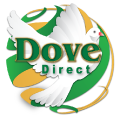Dove Direct Print and Marketing Blog, “Best Practices for Print and Digital Integration”
Welcome to the Dove Direct Print and Marketing Blog. Today's post, "Best Practices for Print and Digital Integration," highlights the best tactics to couple print and digital marketing.
As we approach 3Q2019, most people are experiencing a barrage of digital advertisements hitting cell phones, emails, and tablets. If the user searches and receives results for a particular product or service, their social media timelines usually explode with a ton of similar and competitive offerings. These results typically spur people to trudge onward and check out the recommendations served up in sets of three, as in the top three choices.
Keep in mind that product reviews have become circumspect, especially since marketers are opting to pay influencers and others to deliver positive recommendations. In short, trustworthiness enters the fray, and eventually, the best recommendations come from a person or group that you know and trust. That said, the likelihood that you know someone who has experience with a particular offering reduces the prospect that you will garner the information you require. So now what?
Online marketing campaigns are now under scrutiny for truth in advertising, and yet digital advertising is not going away. Moreover, the challenge marketers are facing is a two-edged sword. On the one hand, organic search and social media provide robust CPL (cost-per-lead) metrics, but when trust and credibility enter the scene, it is more challenging to garner great CPL results.
Conversely, print collateral builds trust, credibility, and propels superb consumer actions. By coupling digital marketing initiatives with print's direct marketing capability, the integration of two unlikely forces drives results that exceed most sales goals. In short, these two marketing disciplines can push ROI to higher levels.
Millions of households, organizations, and patients experience data breaches every year. Therefore, businesses looking to secure transactional relationships with their customers may want to rethink the electronic invoicing model, particularly when it comes to trust.
For example, the NBA basketball team, the Golden State Warriors are playing in the Western Conference Finals without two of their stars, Kevin Durant and Boogie Cousins, both NBA All-Stars. Still, they are defying the sports critics assessments that the Houston Rockets would demolish the Warriors in the second round. History tells another story. The Golden State Warriors are now competing in the Western Conference Finals against the Portland Trailblazers, not to mention are 2 wins away from advancing to the NBA Finals
Instead of succumbing to the notion that they will lose without their all-stars, the Warriors are incorporating an all-hands-on-deck approach and strategically employing bench players based on those players strengths. It's true that Steph Curry and Klay Thompson will lead the offense, however, to win a championship, they will need more. In the marketing world, you need more than just digital to win consumers.
Digital Trust Issues
Digital marketing and advertising permeating today's landscape is in jeopardy due to two key elements: diminished quality and over-saturation. The Wall Street Journal reported early in 2019 that Facebook admitted to overestimating the average time people spent watching video ads on their platform for two years, albeit at an exaggerated 85% clip. Can you imagine how iconic advertisers received this news? One can only surmise that there will be a ton of make-goods, given the number of advertising dollars big brand advertisers spend for video content creation and promotion.
Also, due to the growing increase in low-quality content, of which almost all contain advertisements, the digital landscape is over-saturated. As a result, ROI is declining, and advertisers and brands are taking notice. With the digital universe continuing its struggle to evolve to a more mature outlet, more and more marketers and advertisers are resorting to that timeless, often forgotten marketing tool, direct mail.
With these points in mind, let's look at the best practices for print and digital integration.
1. The Partnership Concession
Just about every successful relationship is required to meet at the half-way point. Compromise is the key. When a household income is a shared endeavor, it is incumbent that both parties take into consideration the needs of both sides.
Marketing initiatives are also similar in that advertising only in the digital medium represents half of the equation. Therefore, we contend that an online campaign needs an offline counterpart. Using a direct mail marketing piece, such as a postcard directing recipients to an online destination, will generate a higher response and engagement rate.
2. Don't Forget QR Codes
Print collateral that employs QR codes significantly enhances any digital marketing destination. QR codes make it much easier for consumer targets to reach an online destination. For the record, Statistia is estimating that some 11 million households will scan a QR code in 2020! Moreover, that's just in the U.S. QR code scanning in 2018 was estimated at 9.8 million. Use QR codes to direct your targets to your online destinations, including email campaigns.
3. Use Your Digital Data
If you haven't kept track of your digital data, you should start today. Any online data that you can accumulate can prove to be essential with offline marketing initiatives. For example, let's assume a posted LinkedIn article explaining the benefits of an insurance policy gained notable traffic results. The next step is to use LinkedIn data to create a direct mail piece around that article and possibly develop a special offer for those interested in the insurance article.
Collecting data provides more actionable insights and over time, will yield much higher sales results. Therefore, those emails, comments, reviews, and communications are a treasure trove of data for implementation into your next campaign.
4. Calls-To-Action (CTAs) & Landing Pages
Sales 101 suggests that marketers, advertisers, and salespeople should always be asking for the sale, or at the very least, should always be suggesting the next steps. In short, as in the movie, "Glengarry Glenn Ross," 'always be selling.' CTAs are the most powerful marketing tool that transcends both digital and traditional marketing efforts.
In hindsight, the lack of a compelling call-to-action leaves most consumers at the gate, and more importantly, leaves them at a quandary as to how to proceed. We contend that including a clear call-to-action on all print campaigns will improve your overall response rate. Besides, creating specific landing pages to accompany the call-to-action direct mail piece adds to the probability that consumers will travel further along the sales funnel. The most crucial element here, and before formulating the direct mail piece, is to create a great landing page and then develop the marketing campaign around the landing page.
5. Variable Digital Printing and Social Media Campaigns
Best practices for print and digital integration requires the use of print's variable digital printing technology. For example, invite your social media followers to register for free samples via an online social media advertisement. The next step would be to create a direct mail campaign focusing on the social media groups whose interest in receiving the free samples were made clear. Facebook's demographic information makes it a snap to target folks by multiple demographics, including age and gender.
The variable digital printing technology provides a mechanism that allows you to create personalized messaging, including graphics, content, and language best suited for a particular group or individuals. Even if the tactic is something as simple as a postcard affirming the social media offering with a new call-to-action, the engagement and response rates will climb.
The Net-Net
When brands ensure that all of the marketing initiatives, both online and offline, are in lock step with each other, the likelihood of consumer engagement increases, while simultaneously adding value for every touchpoint. Thanks for reading "Best Practices for Print and Digital Integration."
Let's have a conversation about direct mail strategies, printing, print software, transactional documents, variable digital printing, brand equity and unified marketing collateral during our next Open House. We invite you to join us on Thursday, May 30, 2019, for an hour or two, anytime between 10:30 am to 3:30 pm. Let us show you how to improve your document processes to optimize your workflow, reduce your costs, and maximize your organization's printing, letter shop, and mailing capabilities. Dove Direct does have an official USPS certified bureau located within our offices that will save you time and money. And, if you bring us your files, we will create a demo file for you. For more information call Carla Eubanks at 404-629-0122 or email Carla at This email address is being protected from spambots. You need JavaScript enabled to view it..
Atlanta based print and mail solutions provider offers organizations end-to-end data, printing and mailing solutions: Data Management, Variable Digital Printing, LetterShop and Fulfillment, Fully Automated MLOCR Presort Bureau, Marketing and Production Management Support and Secure Data Life Cycle Management.
If you don't want to wait for the Open House, you can reach Dove Direct today by calling 404-629-0122 or use the contact form for Dove Direct.





